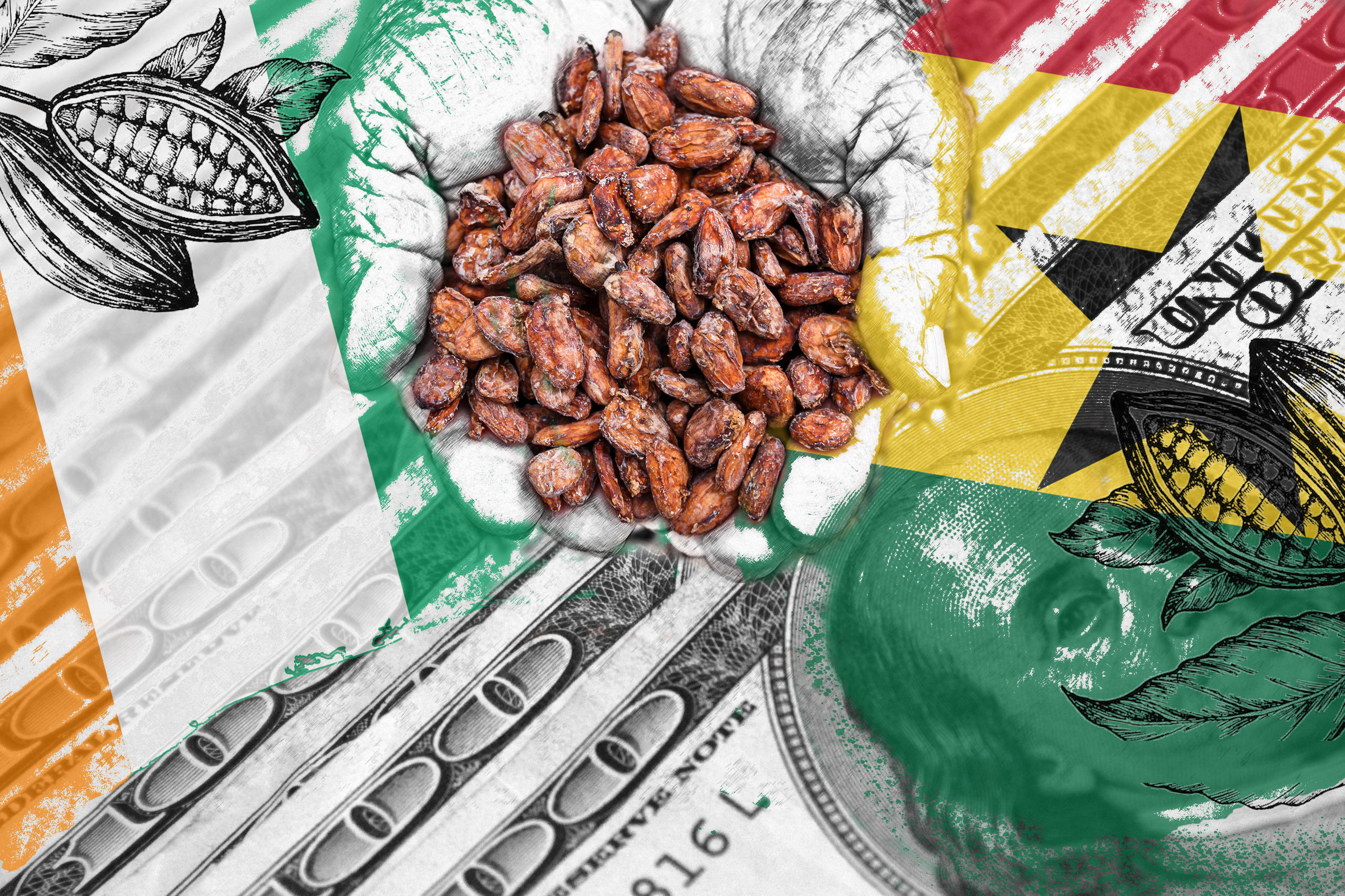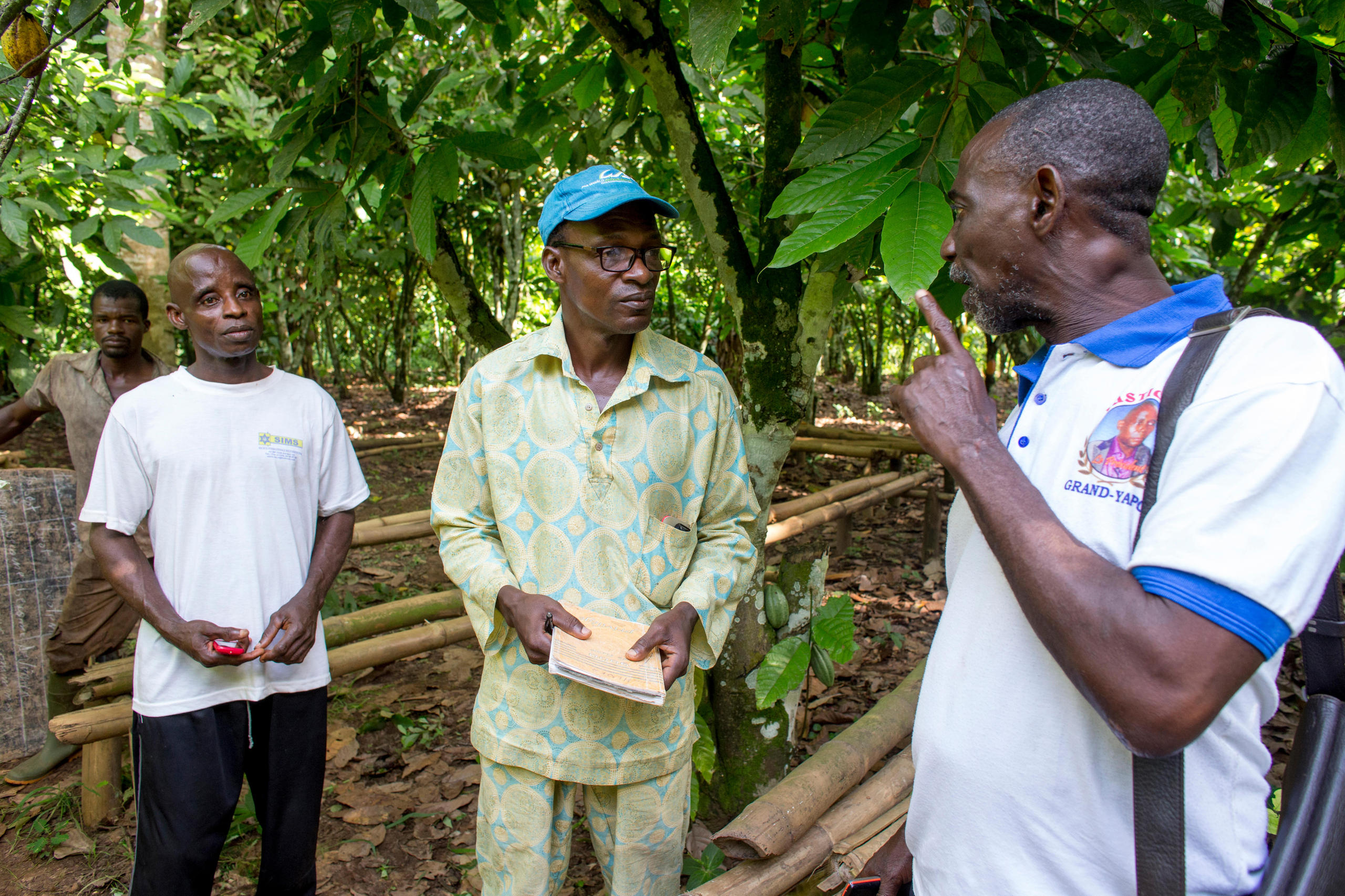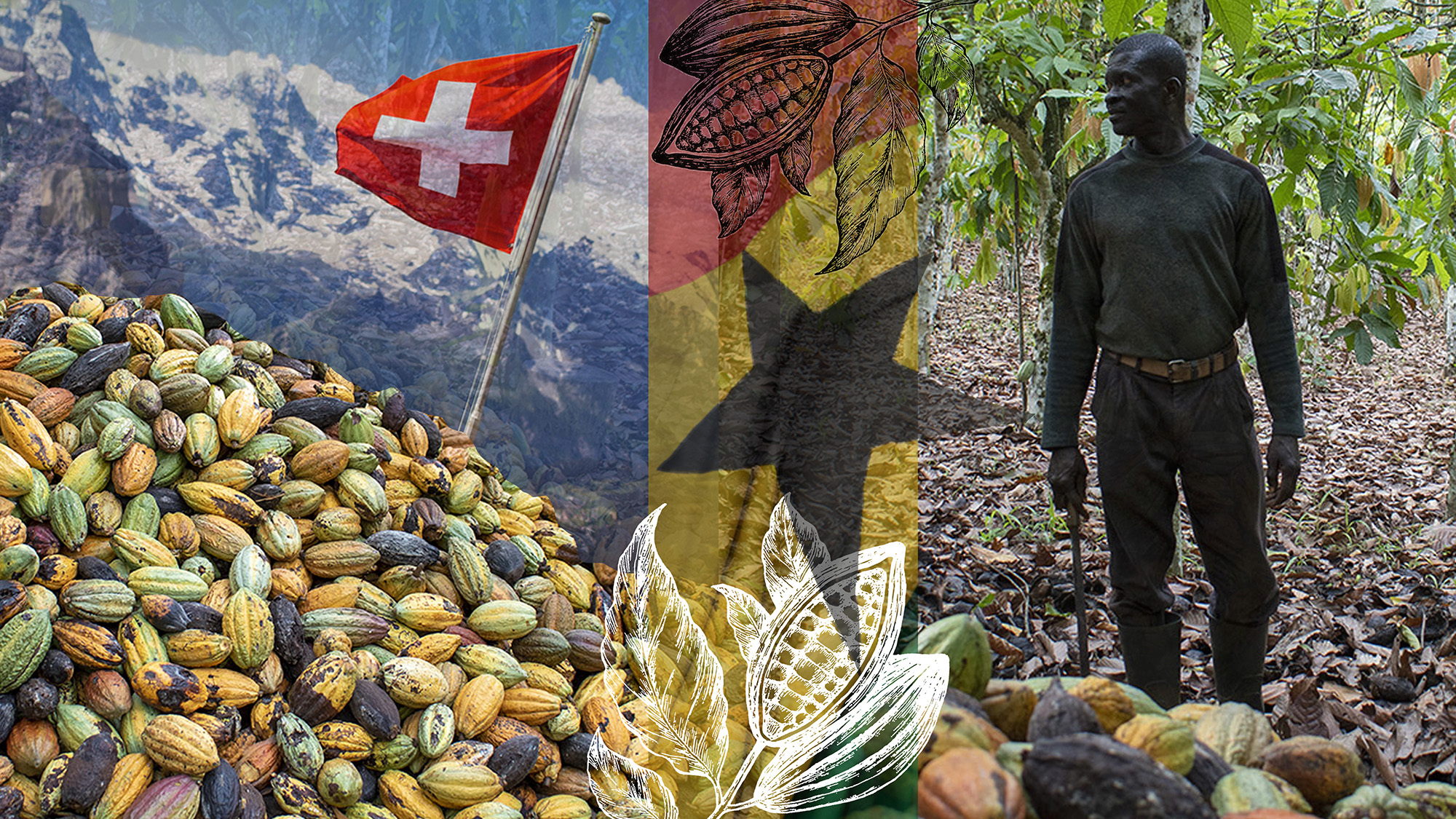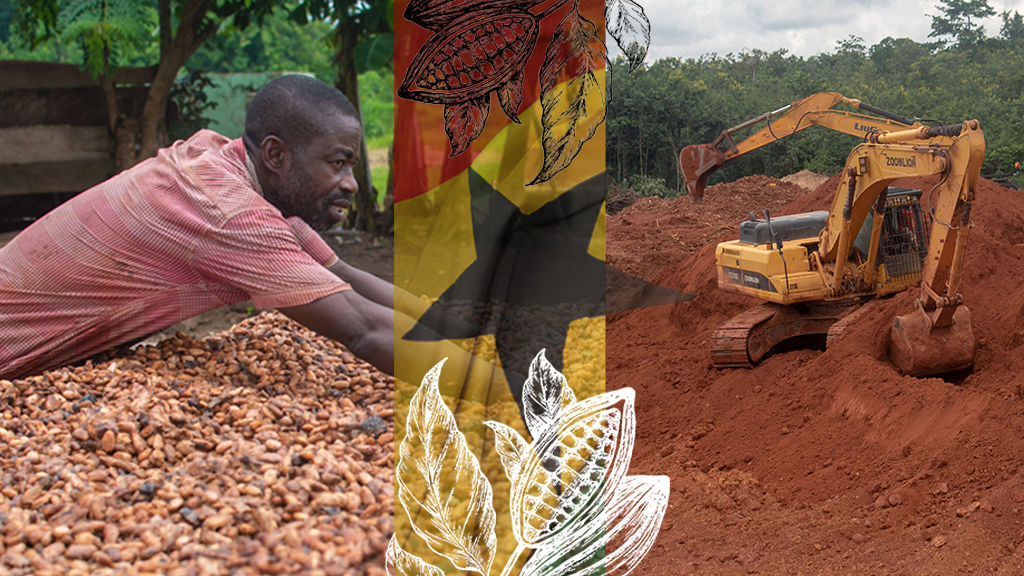Can a West African cocoa cartel rise from the ashes?

An initiative by Ghana and Ivory Coast to raise cocoa bean prices was derailed by the Covid-19 pandemic. They’re now trying to claw back lost ground and lift millions of farmers out of poverty.
Native to Central and South America, cocoa cultivation in West Africa has first been recorded as far back as 1868. The archives of the Royal Botanic Gardens in Kew refer to a few cocoa trees that were thriving on the property of the Swiss missionary charity Basel Mission in Akropong in what was then known as the British Crown colony of Gold Coast. Today, the West African countries of Ivory Coast and Ghana produce over 60% of the world’s cocoa beans and Switzerland has become synonymous with chocolate.
This mutually beneficial relationship has come under strain in recent years. Ivory Coast and Ghana are no longer satisfied with their meagre slice of $6 billion of the $120 billion chocolate industry. Switzerland, along with the European Union and the US, is unhappy about deforestation and child labour in cocoa growing regions of West Africa. Both sides are applying pressure on each other to get what they want but the power balance is still heavily skewed in favour of the cocoa consumers compared to the cocoa producers. The combined revenue earned by Swiss chocolate makers Nestlé (confectionery only), Lindt & Sprüngli and Barry Callebaut in 2021 was more than three times the combined value of cocoa beans exported by Ivory Coast and Ghana the year before. As major stakeholders they are also shaping what cocoa production will look like in the future.
This series of six articles will look at how West Africa is trying to renegotiate its role in the chocolate industry. From joining forces and adding value to investing in digitisation and sustainability. It is an uphill battle but a necessary one to avoid being held hostage by global cocoa prices and ensuring a livelihood for the five million cocoa farmers in the region.
The world’s two biggest cocoa producers have had enough. Pressured into offering discounts to international buyers to shore up sales during the Covid-19 pandemic, Ghana and Ivory Coast decided to take a joint stand.
On July 29, the Côte d’Ivoire-Ghana Cocoa Initiative (CIGCI), an Accra-based joint price lobbying organisation announced that from August Ghana and Ivory Coast would stop giving concessions on a longstanding premium known as the origin differential (OD), the price paid above the international market price for high quality cocoa beans. The ODs were cut by 150% in the previous two years in a desperate effort by the cocoa boards of the two countries to shift stocks of beans. What was once a price premium that raised the incomes of millions of cocoa farmers was transformed into a discount that drained their fiscal budgets.
“You [international cocoa buyers] still get the same quality, but you as a market decide to discount it because you feel the price is too high for the market,” Alex Assanvo, CEO of the CIGCI told SWI swissinfo.ch.
The CIGCI set a November 20 deadline for chocolate and cocoa companies to stop asking for OD discounts and threatened to suspend their sustainability programmes and ban their access to cocoa plantations to estimate harvests unless they complied.
Two days before the deadline, an agreement was reached to create a working group of cocoa producers and buyers to find a long-term sustainable price mechanism that will ensure farmers are paid fairly for quality cocoa beans. The working group will have to come up with a proposal by the end of the first quarter of 2023.
“The November 18 meeting with the buyers presented a strong showing of willingness to work together by all parties,” says Assanvo. “It also affirmed that the member countries have been heard, which will further lead to more transparent engagement with partners.”
The Swiss chocolate industry, which relies heavily on Ghana (55% of Swiss cocoa imports), is keeping a close eye on the talks as the cost of other chocolate ingredients surges.
The war in Ukraine is affecting energy security and the supply of sunflower oil lecithin, a natural emulsifier that helps bind the ingredients in chocolate together. But the main concern is the rising cost of price-protected domestic commodities like sugar and milk, according to Urs Furrer, the director of the Association of Swiss Chocolate Manufacturers, Chocosuisse. A higher price for cocoa beans has less of a negative impact on Swiss chocolate manufacturers because it affects their foreign competitors as well. But there is a limit to how much Swiss manufacturers and retailers can raise the price of their chocolate, which is already among the most expensive in the world.
“We are concerned with a reduced willingness of consumers to pay high prices due to the development of the economic situation. This affects premium products like Swiss chocolate more than cheap mass-produced goods,” Furrer said.
Living income
Yet, while manufacturers worry about their profits, producers worry about their farmers’ incomes. The global chocolate market is worth almost $128 billion a year, according to a report published by MarketsandMarkets, a market research platform, in August. However, Ghana and Ivory Coast, who together account for 60% of world output of the high-grade beans needed to make chocolate, claim they take just $6 billion of that pie.

Their farmers barely make ends meet. Around a million cocoa farmers in the two West African nations (out of about five million in total) don’t earn enough to afford all their basic needs such as food, shelter, clothing, education and medical care, according to a data analysis carried out by the University of Wageningen in the Netherlands in November 2021. Ghanaian and Ivorian cocoa farmers make just $1.42 and $1.23 net per person per day, respectively, according to surveys carried out in 2019 by Cocoa Life, the sustainable sourcing programme of chocolate company Mondelēz International. That’s far lower than the living income benchmarks of $2.08 and $2.55.
On March 26, 2018, the presidents of both countries met in the Ivorian capital Abidjan and signed what is known as the Abidjan declaration, formalising a partnership that pledged to work together to increase prices for their cocoa farmers.
One of the first outcomes was the creation of CIGCI, which was given responsibility for monthly announcements of the price at which the two countries were willing to sell their cocoa. The objective was to turn the tables on international buyers by setting prices producers were willing to sell for.

In 2019, the cocoa boards of Ghana and Ivory Coast made a landmark decision to charge an extra $400 per ton on cocoa exports to places like Switzerland. Known as the Living Income Differential (LID), the levy was meant to increase the incomes of cocoa bean growers and buffer them from volatile prices.
But just as the cocoa cartel seemed to be accomplishing its objective with the LID, the Covid-19 pandemic struck, leading to a slump in demand for cocoa and chocolate. Between October 2019 and June 2020, the processing of cocoa was estimated to have fallen by 3.2% globally and by 4.1% in Europe, according to data from the International Cocoa Organization (ICCO).
“These new estimates are evidence of the harmful effect of the coronavirus pandemic on demand for cocoa and chocolate products worldwide,” the ICCO’s Cocoa Market Review said.
In this environment, the LID surcharge of $400 per tonne had made Ivorian and Ghanaian cocoa too expensive compared with beans from countries such as Indonesia, Nigeria, and Ecuador. To offload their inventories, Ghana and Ivory Coast were forced to sell their cocoa beans at a discount by dropping the OD premium. So even though cocoa traders and chocolate companies continued to pay the LID, the levy was effectively neutralised as the OD premium turned negative. It seems like surcharges and premiums are no guarantee of higher prices for cocoa farmers.
“The system is set up in such a way that cocoa producers can never win,” a cocoa trader who declined to be named told SWI swissinfo.ch. “They can increase the price but international buyers will simply purchase cocoa elsewhere and any unsold produce will have to be discounted later.”
Rainforest Alliance, a non-profit that works with over half a million cocoa farmers in Ghana and Ivory Coast to grow sustainable cocoa, supports the efforts of the Ivory Coast and Ghanaian governments to increase the incomes of their farmers. And while the differentials system has failed so far, it believes the two countries can raise incomes in other ways.
“These other levers include robust traceability systems throughout the supply chain and more effective management of cocoa supply and demand at national and regional level, as this can mitigate market price volatility, and support farmgate prices that are more profitable for producers,” a spokesperson told SWI swissinfo.ch.
Around 70% of the cocoa crop in Ghana and Ivory Coast is sold in advance. The reference price is based on cocoa futures traded on the Intercontinental Exchange (ICE) in the US and adjusted to include the origin differential (OD) and living income differential (LID). The remaining 30% is sold directly on spot exchanges.
Farmers get around 70% of the export revenue earned from cocoa beans minus costs for services such as insurance and freight that are provided by the cocoa boards. In recent months the minimum cocoa farmgate price for Ghana and Ivory Coast has fluctuated in a range of $0.80 to $1.50 per kg depending on currency exchange rates.

Impact on Swiss chocolate
Attempts by Ivory Coast and Ghana to recalibrate cocoa prices have not deterred the Swiss chocolate sector – at least not yet.
Lindt & Sprüngli, the world’s seventh biggest chocolate company with sales of over CHF4.5 billion in 2021, has “purchased cocoa with full LID pricing and will continue to do so,” a spokesperson for the 177-year-old Swiss chocolate maker told SWI.
Swiss food giant Nestle’s share of cocoa sourced from Ghana and Ivory Coast has remained stable since the imposition of the LID, with just under half of its beans coming from the two countries. The sixth largest chocolate company, which sold CHF7.5 billion of confectionery in 2021, has even committed to increasing its share of Ivorian cocoa of almost 147,000 tonnes by an additional 40,000 tonnes during the 2021/2022 cocoa season and expects the volume of beans it buys from West Africa to increase steadily up to 2025.
“In our observations, there is no evidence so far that our members are sourcing less cocoa from Ghana and Ivory Coast since the introduction of the LID,” said Christian Robin, managing director of the Swiss Platform for Sustainable Cocoa (SWISSCO), a coalition of chocolate makers, retailers, NGOs and academia.
But Robin cautioned that despite efforts to increase their incomes, cocoa producers cannot be completely shielded from the rules of the market.
“The application of the LID and the evolution of country differentials have to be seen in the context of the market dynamics of supply and demand,” he said. “For example, an oversupply of cocoa from certain origins or well-stocked warehouses can have an influence on world market prices and differentials.”
Bouncing back?
With global demand for cocoa slowly recovering, Ivory Coast and Ghana decided in July that the time was right to renew efforts to impose the OD price premium and some buyers have taken the plunge.
In mid-September, Ivory Coast sold cocoa export contracts for the 2023/2024 harvest at a non-negative OD premium for the first time in three years. The buyer was US commodities trader Cargill, which agreed to take 25,000 tonnes without demanding any discounts.
To strengthen their market power, Ivory Coast and Ghana have been lobbying other major cocoa producers to join them. On October 14, Nigeria and Cameroon, who declined to join the cartel when it was set up in 2018, expressed their interest to sign up. A fear of missing out (Nigeria estimates it loses N60 billion or almost CHF125 million a year due to non-collection of LID) and worries about cross-border smuggling due to the LID price gap could have brought about a change of heart.
If they succeed, the four countries together will account for around 75% of global cocoa bean supplies, giving CIGCI even more market sway.
“This partnership with other countries will reduce the ability for the private sector to go elsewhere and also for us to consolidate and have more bargaining power in the landscape we are building for sustainable and rewarding cocoa in which prosperity is shared,” Assanvo said.
Edited by Nerys Avery

In compliance with the JTI standards
More: SWI swissinfo.ch certified by the Journalism Trust Initiative











You can find an overview of ongoing debates with our journalists here . Please join us!
If you want to start a conversation about a topic raised in this article or want to report factual errors, email us at english@swissinfo.ch.